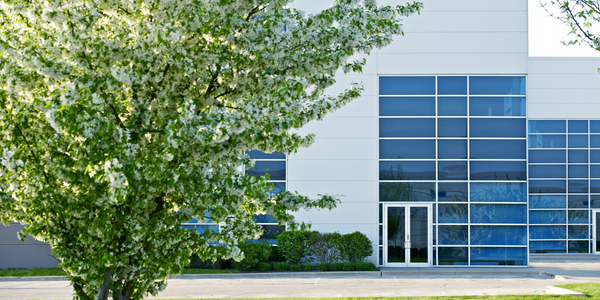Download PDF
AI-based Automation for Commercial Office HVAC: A Verdigris Case Study

Technology Category
- Sensors - Environmental Sensors
- Sensors - Temperature Sensors
Applicable Industries
- Buildings
- Cement
Applicable Functions
- Facility Management
- Maintenance
Use Cases
- Building Automation & Control
- Occupancy Monitoring
Services
- System Integration
The Challenge
Modern buildings are required to run longer hours, support a variety of end uses, and contribute to higher levels of economic productivity, leaving a thin margin for error. However, even the most advanced building and environmental control systems have failed to adequately support facilities and operations management. Buildings are often inefficient and the people using them are underserved. To meet occupant comfort and maintain cost and energy efficiency, a dynamic, AI-assisted approach is needed.
The Customer
Fortune 500 commercial office
About The Customer
The customer in this case study is a Fortune 500 company that operates a mixed-use office and laboratory building. The company was seeking a solution to optimize the energy efficiency and comfort of their building's HVAC system. The building runs for extended hours, supports a variety of uses, and contributes to significant economic productivity. The company was facing challenges with their existing building and environmental control systems, which were failing to adequately support facilities and operations management. The building was inefficient and the people using it were underserved.
The Solution
Verdigris has developed an AI-based solution to automatically minimize HVAC energy usage while maintaining occupancy comfort. Verdigris sensors monitor the building’s energy usage thousands of times per second. To create forecasts, the AI incorporates local weather, utility pricing, building management system (BMS) data, and other available datasets. Where data may not be explicitly available, Verdigris AI can infer it. In this simulation, Verdigris’ AI learns the building’s occupancy by observing security badging patterns. The solution simulates the results of an automatic and persistently optimizing heating ventilation and air conditioning (HVAC) system for a Fortune 500 operated building.
Operational Impact
Quantitative Benefit
Related Case Studies.

Case Study
Energy Saving & Power Monitoring System
Recently a university in Taiwan was experiencing dramatic power usage increases due to its growing number of campus buildings and students. Aiming to analyze their power consumption and increase their power efficiency across 52 buildings, the university wanted to build a power management system utilizing web-based hardware and software. With these goals in mind, they contacted Advantech to help them develop their system and provide them with the means to save energy in the years to come.

Case Study
System 800xA at Indian Cement Plants
Chettinad Cement recognized that further efficiencies could be achieved in its cement manufacturing process. It looked to investing in comprehensive operational and control technologies to manage and derive productivity and energy efficiency gains from the assets on Line 2, their second plant in India.

Case Study
Intelligent Building Automation System and Energy Saving Solution
One of the most difficult problems facing the world is conserving energy in buildings. However, it is not easy to have a cost-effective solution to reduce energy usage in a building. One solution for saving energy is to implement an intelligent building automation system (BAS) which can be controlled according to its schedule. In Indonesia a large university with a five floor building and 22 classrooms wanted to save the amount of energy being used.

Case Study
Powering Smart Home Automation solutions with IoT for Energy conservation
Many industry leaders that offer Smart Energy Management products & solutions face challenges including:How to build a scalable platform that can automatically scale-up to on-board ‘n’ number of Smart home devicesData security, solution availability, and reliability are the other critical factors to deal withHow to create a robust common IoT platform that handles any kind of smart devicesHow to enable data management capabilities that would help in intelligent decision-making

Case Study
Commercial Building Automation Boosts Energy Efficiency
One of the challenges to building automation is the multitude of non-interoperable communications protocols that have evolved over the years. Buildings have several islands of automation. Bridging the islands of different automation without losing the considerable investment in each specialized control network is the main focus in this solution.






